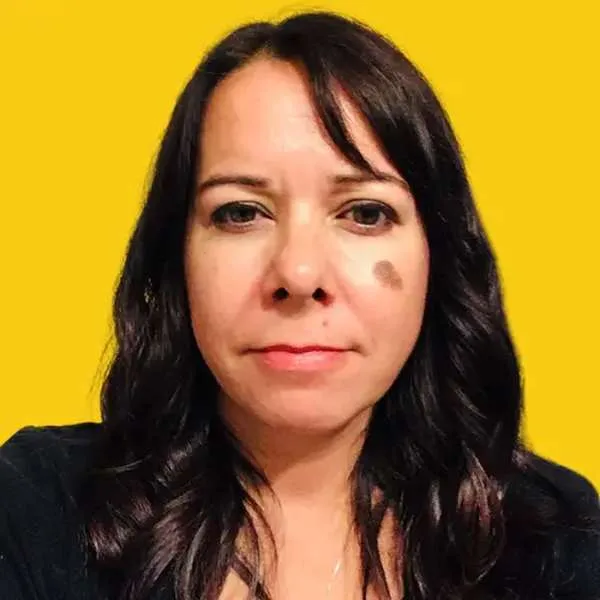Need an influx of cash and can’t wait for your paycheck to land in your account? It happens. Two options are cash advance apps and payday loans. You can typically get bigger loan amounts with payday loans, but it’ll cost you. Cash advance apps are much cheaper, but you’ll still likely pay a fee if you need the money right away.
What is a cash advance app?
A cash advance app is an app that allows users to access a portion of their earned wages before their regular payday, often with low or no fees.
Once you have the app, enter basic details and link your bank account. After the provider verifies your information and deems you eligible (not a given), you can request an advance and have the money almost instantly.
In most cases, cash advances require an active checking account and direct deposit for paychecks. If you don’t have direct deposit, many cash advance apps won’t give you a loan. A few cash advance apps, like Cleo, Vola and Dave, allow cash advances without direct deposit. But you’ll need to meet other requirements.
Borrowing limits vary by lender, but most max out at around $200 to $250 — although some offer higher limits of up to $500 or even $750. You may have to pay expedited transaction fees, a monthly subscription or membership fees that can range from $1 to $9 or more.
What are the risks of cash advance apps?
A cash advance app typically doesn’t charge interest or late fees. However, if you can’t afford to wait a few days for the funds to transfer for free, you’ll have to pay an instant transfer fee — which varies by app and loan amount. But these apps can typically offer near instant funding when needed.
And though the fees are usually minimal, they can add up quickly if taking cash advances becomes a habit. So between the cash advance, faster transfer fees and any subscription fees these “free” loans can add up and potentially lead to a cycle of debt. However, there are some cash advance apps that have fewer fees or don’t charge subscription fees.
What is a payday loan?
A payday loan is another way to get an advance on your paycheck, but the costs are significantly higher than with cash advance apps. For example, payday loan lenders typically charge both interest and late fees. But they also don’t require credit checks and loan amounts can be higher than with cash advance apps — up to $1,000 in some cases.
Payday lenders calculate interest by charging a flat fee per $100 borrowed. According to the Consumer Financial Protection Bureau (CFPB), lenders may charge between $10 to $30 per $100, with $15 being a fairly common rate. That may not seem like a lot, but that equates to nearly a whopping 400% APR for a two-week loan.
Loan proceeds are typically deposited directly into your checking account, but depending on the lender and your circumstances, you may receive the funds in cash, by check or loaded onto a prepaid debit card. The loan is typically repaid in full on your next payday by having it automatically deducted from your bank account, although some lenders may allow you to pay in a few installments.
What are the risks of payday loans?
The primary risks of payday loans are paying predatory interest charges, and the potential for having to extend the loan if you can’t repay it on time. If you have to rollover, or renew the loan, you’ll typically be charged additional fees on top of the original charges, which puts you deeper in debt.
Because of this, there is a very high risk of borrowers getting caught up in a debt cycle that can be difficult to overcome. In a study done by the CFPB, findings revealed that 80% of payday loans are rolled over or renewed within two weeks, and more than 60% of loans are extended to borrowers in the course of at least seven loans in a row.
Cash advance apps vs. payday loans
Cash advance apps and payday loans serve very similar functions, but there are some key differences.
The similarities
- Short-term loans tied to paydays. Both lending options lend small sums to borrowers and most commonly expect to be repaid out of the next paycheck.
- No credit checks. Both payday lenders and cash advance apps don’t check credit scores. They also don’t report to credit bureaus if you make late payments or default on the loan.
- Small loan amounts. Neither borrowing option extends loans of more than $1,000, so you’ll have to look elsewhere if you need to borrow more than that.
- Risk of debt cycle. Borrowing against your next paycheck by either method can become a habit that may be difficult to break.
The differences
- Size of loans. Neither cash advance apps nor payday lenders offer large loans. However, some apps only let you borrow very small amounts at first (like $20), where first time borrowers can usually get more from a payday loan.
- Cash advance apps are cheaper. Even though some apps may charge monthly membership fees or fees for expedited transfers, they are generally much less expensive than payday loans.
- Funding time. If you apply for a payday loan online, you may not get the money until the next day. If you’re approved for cash advance app services and pay an instant transfer fee, you could have the funds in minutes.
Which is the better way to borrow money?
If you’re in a bind and only need a small loan, a cash advance app is the better way to go. Yes, you may have to pay a fee to get the money instantly, and some apps have monthly subscription fees, but they are cheaper than rates charged by traditional payday lenders.
On the other hand, if your cash advance app only approves a loan for $100 and you need $200, you may need to seek out a payday lender instead. But be prepared for high fees. Either way, neither option should be considered a long-term lending solution.
It’s best to try and avoid the potential debt cycle that either option can promote, adds Philip Parker, founder of CardPaymentOptions.com.
“It’s important to consider the potential for dependency on these financial instruments, which can lead to a cycle of debt if not managed properly. Both options should be used cautiously as stop-gap arrangements rather than long-term financial solutions. Users should also be aware of the privacy implications of linking bank accounts to third-party apps.”
Compare cash advance apps
Compare these cash advance apps, paying special attention to membership fees and expedited transfer costs.
What is the Finder Score?
The Finder Score crunches 3+ types of short-term loans across 65+ lenders. It takes into account the product's interest rate, fees and features, as well as the type of loan eg investor, variable, fixed rate - this gives you a simple score out of 10.
To provide a Score, we compare like-for-like loans. So if you're comparing the best short-term loans for all credit types, you can see how each short-term loan stacks up against other short-term loans with the same borrower type, rate type and repayment type.
Alternatives to cash advance apps and payday loans
Cash advance apps may only approve very small loan amounts — especially for newer users — and payday loans are so expensive that it’s worth exploring other options.
- Borrow from friends and family. If possible, a loan from a parent, sibling or friend could tide you over until you get your next paycheck.
- Credit card cash advance. While not ideal due to high interest rates, you could get a cash advance from your credit card through a bank or ATM without an approval process or waiting period.
- Payday alternative loan (PAL). Some credit unions offer PALs, small-dollar loans with better interest rates and longer repayment periods than payday loans. But you must be a member to apply and may need to belong for at least a month before you can borrow.
- Ask your employer for an advance. Depending on who you work for, your employer might spot you a loan and then deduct the amount from your next paycheck. There are apps for that too, but your company might be willing to float you a loan to tide you over until payday.
Bottom line
Payday loans and cash advance apps are two popular options to obtain a small loan between pay periods. Cash advance apps basically came about as a less expensive answer to predatory lending and are fast and convenient, if not totally “free.”
You still usually have to pay a charge to get the money instantly, and some may also require a monthly membership fee. But sometimes, the loan amounts are so low that, in an emergency, you might have to go with a traditional payday loan or alternative.
Frequently asked questions
Do I need direct deposit to borrow from cash advance apps?
Most cash advance apps have direct deposit requirements to borrow money. But there are a few apps, like Cleo and Vola, that advance money to users who don’t use direct deposit as long as they meet other requirements.
What other features do cash advance apps have?
Many apps offer savings accounts, budgeting tools, overdraft protection and credit-building opportunities, to name a few.
Can I get a payday loan if I’m in the military?
In general, military members can’t get payday loans because the typical interest rates charged violate the Military Lending Act, which caps interest rates on some consumer loans to military members at 36%. In most cases, payday lenders charge much more than that. Military members who meet the qualifications for cash advance apps, however, can get short-term loans that way.
Ask a question
More guides on Finder
-
Money App Review: Glitchy & Poor Customer Service
A review of Money App, a cash advance app that offers advances up to $250 with no mandatory fees.
-
Apps Like Money App
Alternatives to apps like Money App, which may have higher advance amounts and other perks.
-
Cash Advance Apps Without Subscription Fees
Six cash advance apps that don’t charge subscription fees and the total costs of other cash advance providers.
-
7 Top Cash Advance Apps With No Credit Check in 2025
Compare top cash advance apps that don’t require a credit check to qualify.
-
Apps like Empower
8 apps like Empower that may offer bigger advances and lower fees.
-
Cleo cash advance app review
Cleo is a budgeting app offering cash advances up to $250.
-
7 Best Cash Advance Apps for Fast & Easy Cash Loans
Compare the 8 best cash advance apps for low fees, high limits and more.
-
Vola Finance Cash Advance App Review: Mixed Bag
Borrow up to $300 — but membership fees aren’t transparent.
-
Dave ExtraCash Review: Cash Advances Up to $500
Struggling before payday? See how Dave’s cash advances stack up and what to watch out for.
-
6 Apps That Loan You Money Instantly Without a Job
Unemployed and need to borrow money? You may qualify for one of these loans or cash advance apps.

